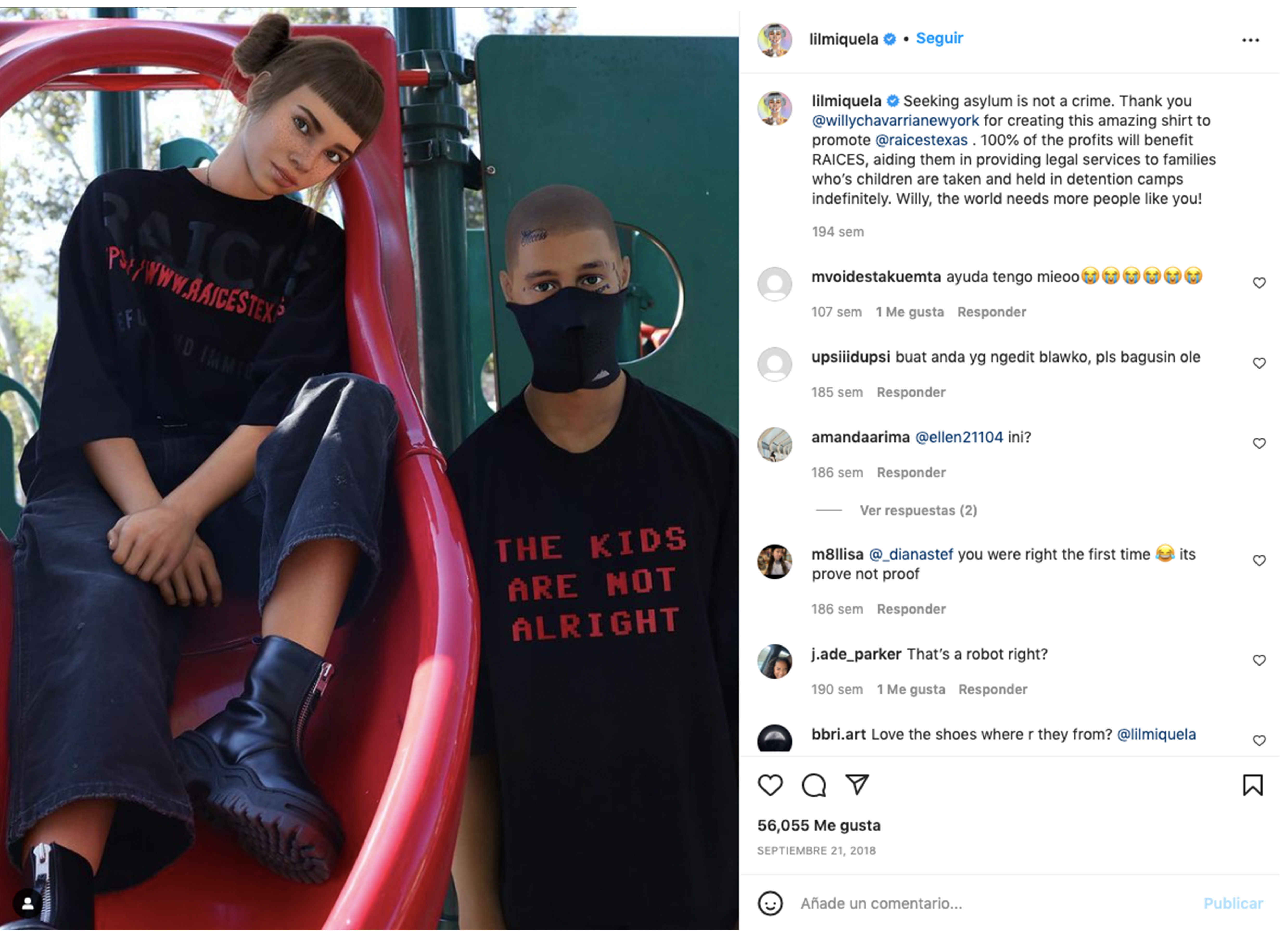Vague Digital Identities
Concealment Identities on the Network
DOI:
https://doi.org/10.30827/sobre.v10i.28623Keywords:
Internet, faceless, fictional characters, online identitiesAbstract
The culture of the first Internet, based on cooperation and the privacy of its users, has now been replaced by a system run by large corporations who own the social networks in which we interact with others, project ourselves and share details regarding our personal identity. Throughout this period, from time to time, various examples of characters who have operated on the Internet under a fictitious identity have emerged. They affect areas such as the digital economy, privacy policies or the accumulation of reputational capital. In this article we will review some case studies in this regard, analysing their contributions and questions in relation to the social, cultural and economic dynamics concerning the use of the Internet and connectivity in contemporary society.
Downloads
References
Cherrington, R. (2016, septiembre 2). Lil Miquela: Instagram's Latest 'It' Model Who's Confusing The Hell Out Of Everyone. HuffingtonPost. https://www.huffingtonpost.co.uk/entry/lilmiquela-instagram_uk_57c94056e4b085cf1ecdc0af.
Clein, E. (2019, junio 28). Branding Fake Justice for Generation Z. The Nation. https://www.thenation.com/article/archive/social-justice-cgi-advertising-brud/.
Cramer, F. (2005) Words Made Flesh: Code, Culture, Imagination. Piet Zwart Institute.
Davis, J. (2011, octubre 3). The Crypto-Currency. Bitcoin and its mysterious inventor. The New Yorker. https://www.newyorker.com/magazine/2011/10/10/the-crypto-currency.
De Salvador Agra, S. (2018). Guerrillas ciberfeministas: La batalla desde los códigos. Revista andaluza de Antropología, Irrupciones feministas. Problemáticas epistemológicas y políticas, 14, 133-153. DOI: https://doi.org/10.12795/RAA.2018.14.08
Husain, A. (2020). Virtual Tower, ‘Virtual’ Pit: On Potentiality and the Status of Unrealised Art. Afterall: A Journal of Art, Context and Enquiry, 50, 76-93. DOI: https://doi.org/10.1086/712848
Illouz, E. (2007). Intimidades congeladas. Las emociones en el capitalismo. Katz. DOI: https://doi.org/10.2307/j.ctvndv74r
Mieszkowski, K. (2002, marzo 1). The most feared woman on the Internet. Salon. https://www.salon.com/2002/03/01/netochka/.
Nakamoto, S. (2008, octubre 31). Bitcoin P2P e-cash paper. The Cryptography Mailing List. https://bitcoin.org/bitcoin.pdf.
Orán Llarena, L. (2021). Apropiación y simulacro en la representación visual a través de redes sociales. El caso de Instagram. [Tesis doctoral, Universidad Complutense de Madrid], Docta Complutense. https://docta.ucm.es/entities/publication/17cb55af-4edc-4b1d-ad97-d19b423d595a.
Petrarca, E. (2018, mayo 14). Lil Miquela’s Body Con Job. New York Magazine. https://www.thecut.com/2018/05/lil-miquela-digital-avatar-instagram-influencer.html.
Prada, J. M. (2015). Prácticas artísticas e internet en la época de las redes sociales. Akal.
Romero, I. [Tendencias.tv] (2012, febrero 7). Intimidad Romero [Vídeo]. YouTube. https://www.youtube.com/watch?v=RnuqJEEMZko&t=2s.
San Cornelio, G. (2008). Arte e identidad en Internet. Editorial UOC.
Terranova, T. (2004). Network Culture: Politics for the Information Age. Pluto Press.
Tolentino, J. (2019). The Age of Instagram Face. How social media, FaceTune, and plastic surgery created a single, cyborgian look. The New Yorker. https://www.newyorker.com/culture/decade-in-review/the-age-of-instagram-face. DOI: https://doi.org/10.32376/3f8575cb.760db98a
Zafra, R. (2012, junio). Intimidad. remedioszafra.net. https://www.remedioszafra.net/texto_Intimidad_RemediosZafra_jun2012.pdf.
Zafra, R. (2019). La (im)posibilidad de un mundo sin párpados. Ensayo sobre la intimidad conectada. Isegoría, 60, 51-68. DOI: https://doi.org/10.3989/isegoria.2019.060.03

Downloads
Published
How to Cite
Issue
Section
License
Copyright (c) 2024 Claudia González

This work is licensed under a Creative Commons Attribution-NonCommercial-ShareAlike 4.0 International License.
Aquellos autores/as que tengan publicaciones con esta revista, aceptan y certifican los términos siguientes:
· Que ha contribuido directamente al contenido intelectual del trabajo, del cual se hace responsable a todos los efectos.
· Que aprueba los contenidos del manuscrito que se somete al proceso editorial de Revista SOBRE, y por tanto está de acuerdo en que su nombre figure como autor.
· Que el contenido del artículo no ha sido publicado y que tampoco figura en otro trabajo que esté a punto de publicarse.
· Que se compromete a no someterlo a consideración de otra publicación mientras esté en proceso de dictamen en Revista SOBRE, ni posteriormente en caso de ser aceptado para su publicación.
· Que no ha tenido ni tiene, relaciones personales o financieras que puedan introducir prejuicios y sesgos en el desarrollo o los resultados del presente trabajo.
· Que han sido mencionadas en el epígrafe de agradecimientos todas aquellas personas que, habiendo otorgado su permiso para tal mención, han contribuido de manera sustancial al desarrollo del trabajo.
· Que se compromete a facilitar, cuando así lo requiera la revista, el acceso a todos los datos y fuentes en los que se funda el trabajo presentado.
· Que participará activamente en la realización de todas aquellas modificaciones de estilo u ortotipográficas que sean necesarias para la publicación del trabajo cuando así se lo notifique el equipo editorial de la revista.
· Que no ha violado, ni violará, las leyes y derechos humanos o animales durante el proceso de investigación y publicación de este trabajo.
· Que ninguna de las instituciones en las que desarrolla su labor científica e investigadora ha presentado objeciones con respecto a la publicación del manuscrito que se somete a evaluación.
· Que todos los datos y las referencias a materiales ya publicados están debidamente identificados con su respectivo crédito e incluidos en las notas bibliográficas y en las citas que se destacan como tal y, en los casos que así lo requieran, cuenta con las debidas autorizaciones de quienes poseen los derechos patrimoniales.
· Que los materiales están libres de derecho de autor y se hace responsable de cualquier litigio o reclamación relacionada con derechos de propiedad intelectual, exonerando de responsabilidad a Revista SOBRE.
· Que en caso de que el trabajo sea aprobado para su publicación, autoriza de manera ilimitada en el tiempo a la entidad editora para que incluya dicho texto en Revista SOBRE y pueda reproducirlo, editarlo, distribuirlo, exhibirlo y comunicarlo en el país y en el extranjero por medios impresos, electrónicos, CD, Internet o cualquier otro medio conocido o por conocer.









